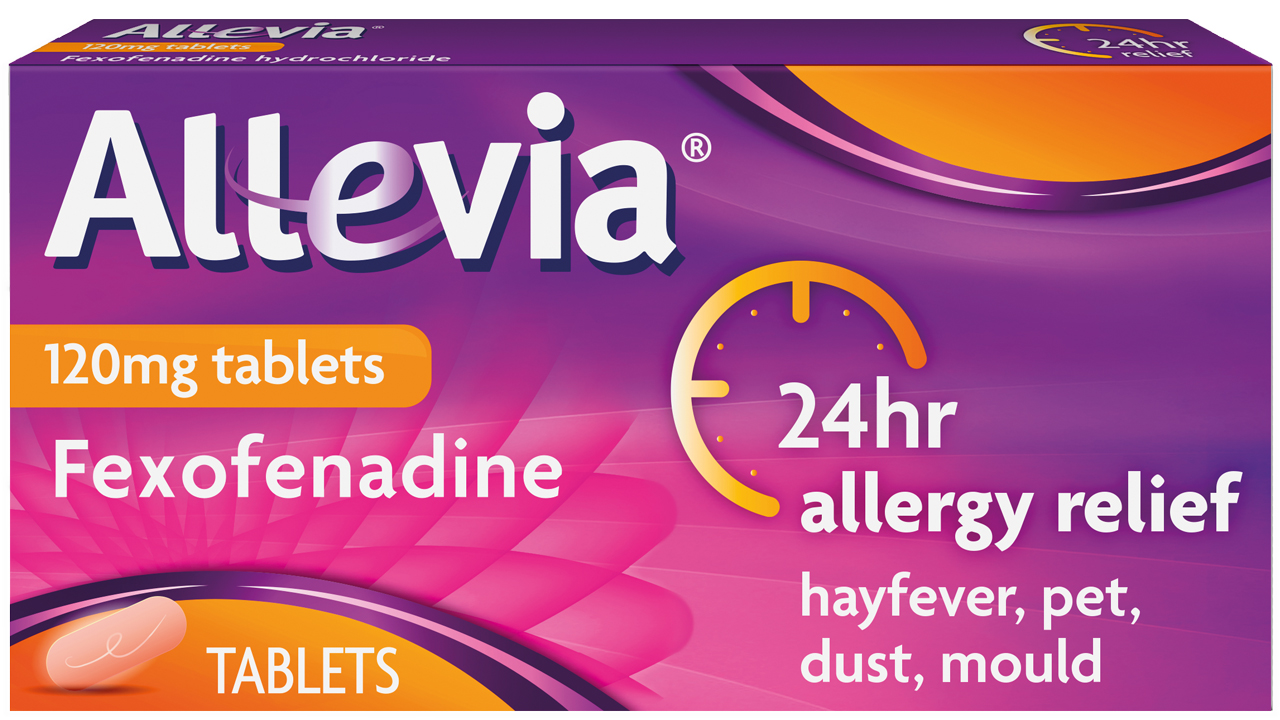In Opinion
Follow this topic
Bookmark
Record learning outcomes
What is Allevia?
Allevia 120mg tablets contain fexofenadine, a second-generation antihistamine, indicated for the relief of allergic rhinitis, such as hayfever and other airborne allergies like pet dander, dust mites and mould allergies. Common allergic rhinitis symptoms include sneezing, itchy, runny, blocked nose; and itchy, watery red eyes.
Fexofenadine has been available worldwide for over 25 years but remained a prescription only medicine in the UK until Sanofi Consumer healthcare took the decision to reclassify it from POM to GSL to create a new self care option in 2022.
This is a prescription-strength medicine that gets to work in just one hour – no one-a-day tablet acts faster.1
What are the benefits?
Allergic Rhinitis affects 26 per cent of adults in the UK,2 with up to 50 per cent of the population affected worldwide.3 48 per cent living with this condition agree that symptoms prevent them performing at their best,4 so effective symptom control is important. It is a condition that needs treating at first sign of symptoms.
There is currently no cure for hayfever,5 so pharmacy teams can play an important role in helping people suffering with troublesome symptoms to understand the options available.
Whilst a wide range of antihistamines are available in this category, not all molecules are the same and different medicines suit different people. Choosing the right treatment is hence important for consumers.
Allevia delivers against the top three consumer needs: it acts within one hour, the effects are long-lasting – providing 24-hour relief – and it is non-drowsy in the majority of people.
Importantly, pharmacists can be confident recommending fexofenadine as it has a high margin of safety and is well tolerated.6
How does it work?
Allergic rhinitis is a misplaced immune reaction to harmless molecules, such as pollen, in which the body treats them as though they were foreign pathogens and releases substances, including histamine, designed to eliminate them. This leads to inflammation in the lining of the nose.
The mechanism of action of fexofenadine is to selectively work against H1 receptors on the surface of cells on multiple organ systems. Unlike first generation antihistamines fexofenadine acts on the peripheral histamine receptors and only crosses the blood-barrier to a minimal extent and thus does not cause drowsiness like other H1 blockers.7 Therefore, Allevia is non-drowsy for most people.
The discovery and development of second-generation antihistamines that act selectively on H1 receptors could be considered to be the greatest breakthrough during more than 70 years of the history of antihistamines.8
Where can pharmacy teams find out more?
To learn more about Allevia visit: alleviaallergy.co.uk/healthcare-professionals.
For pharmacy training and support materials and in-store merchandising contact: GB-CHC-CustomerService@sanofi.com.
References
1. Sanofi Data on file
2. G.K Scadding et al. BSACI guideline for the diagnosis and management of allergic and non-allergic rhinitis (revised edition 2017; First Edition 2007). Clinical & Experimental Allergy,. 2017,47: 856-889
3. NICE: Prevalence | Background information | Allergic rhinitis | CKS | NICE
4. Impact Research Ltd 2019 UK Useage & Attitudes Allergy, n=209 allergy sufferers
5. ‘How to treat hayfever yourself’ https://
www.nhs.uk/conditions/hay-fever/ Accessed on 18.12.2023
6. Mason J et al. The systemic safety of fexofenadine HCI Clin Exp Allergy. 1999 (suppl 3): 163-70
7. Craun KL, Schury MP. Fexofenadine (Last Update: December 5, 2022.). In: StatPearls (Internet) https://www.ncbi.nlm.nih.gov/books/NBK556104/ Last accessed 13.02.2024
8. Kuna P, Jurkiewicz D, Dzarnecka-Operacz MM et al. The role and choice criteria of antihistamines in allergy management – expert opinion. Postepy Dermatol Alergol. 2016;33(6):397-410.

